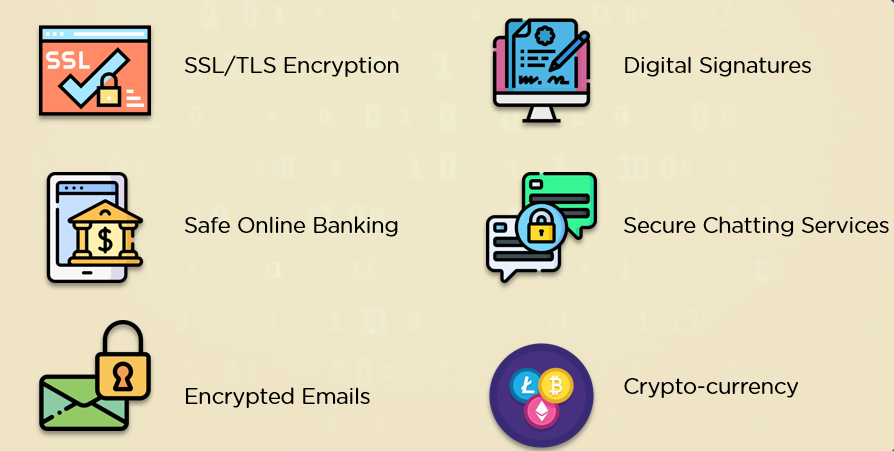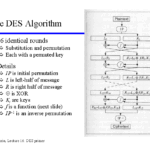Cryptography, often viewed through the lens of tech jargon and complex algorithms, serves as the unwavering bulwark protecting our most sensitive information. From casual conversations on chat applications to the impregnable vaults of financial institutions, cryptography plays an integral role in safeguarding digital communication and transactions. This intricate science is not merely a neoteric phenomenon, but rather a cornerstone of modern society, promising to revolutionize how we understand privacy, security, and trust in the digital era.
The digital landscape is rife with threats, ranging from data breaches to identity theft. Such vulnerabilities underscore the necessity for cryptographic techniques that ensure confidentiality, integrity, and authenticity. By understanding how these techniques are employed across various domains, one can appreciate the significant shift in perspective that cryptography engenders.
Chat applications have burgeoned in popularity, becoming quintessential tools for communication. Yet, as individuals share personal sentiments, intimate revelations, or sensitive data—such as passwords or financial details—the question of security arises. Herein lies the utility of end-to-end encryption (E2EE). This methodology guarantees that messages are only readable by the sender and recipient, thereby foiling eavesdroppers and malicious actors.
Take WhatsApp, for example. This application employs the Signal Protocol, a renowned cryptographic framework designed to protect instant messaging. Each message is enciphered with a unique session key that is exchanged using public key cryptography. Consequently, even if interlopers were to infiltrate the message stream, they would encounter a cipher—an insurmountable barrier to understanding the content. This feature has not only elevated user confidence but has fundamentally altered the way society perceives digital conversations.
From the casual user to high-profile individuals, the need for secure communication is paramount. The result is an increasing reliance on applications that prioritize privacy. This level of encryption, however, invites a complex dialogue regarding the balance of security and accountability. As users embrace these innovations, they must also consider the societal implications, including the potential misuse of privacy shielding technologies by nefarious characters.
Moving beyond chat applications, the financial realm exemplifies another pivotal arena for cryptographic applications. The banking industry—historically characterized by stringent security protocols—has deftly harnessed cryptography to bolster its defenses. At the core of this advancement lies the use of encryption algorithms to safeguard transactions, ensuring that customer data remains inviolate.
Consider the role of cryptographic hashing in payment processing. Each transaction is accompanied by a digital signature, a cryptographic stamp that verifies the authenticity and integrity of the information. This provides not only a mechanism for fraud prevention but also engenders trust among customers who expect their financial dealings to remain confidential. Data breaches in major corporations have illustrated the dire consequences of insufficient cryptographic measures; thus, the evolution of more sophisticated algorithms has ensued.
In the broader context of digital currencies, blockchain technology emerges as a revolutionary application of cryptography. Cryptocurrencies, such as Bitcoin, employ cryptographic hashing to secure transaction data across decentralized networks. Here, the cryptographic principles are not merely adjuncts; they are foundational to the architecture of trust within a system that inherently lacks centralized authority. Each transaction is encapsulated in a block, which is then cryptographically linked to the preceding block, creating an immutable chain. This not only ensures transparency but also fosters a novel perspective on ownership and value exchange in the digital domain.
The introduction of smart contracts further exemplifies the versatility of cryptography and its applications beyond monetary transactions. Smart contracts employ cryptographic techniques to automatically execute contractual agreements when predetermined conditions are met. This eliminates the need for intermediaries, facilitates swift transactions, and diminishes the potential for disputes. The ramifications of such automation could be profound, enabling more efficient business operations and fostering trust in various sectors.
Moreover, the medical industry has also begun to leverage cryptography to protect sensitive health information. With the advent of telemedicine and digital health records, safeguarding private patient data has proven paramount. Encryption of health data not only ensures compliance with regulations like HIPAA but also fosters a shift in perspective regarding patient privacy. Individuals are more inclined to engage with digital healthcare solutions when they are assured that their most personal information is secure.
As the landscape of cryptography continues to evolve, several challenges loom ahead. The growing sophistication of cyber threats necessitates ongoing advancements in encryption methodologies. Quantum computing, once only a theoretical consideration, is inching closer to practicality; its potential to undermine traditional encryption could catalyze an unprecedented reset of security protocols. As such, researchers are tirelessly exploring quantum-resistant algorithms to sustain the integrity of cryptographic frameworks.
In conclusion, from chat applications to bank vaults, cryptography encapsulates a vast array of practical applications that shape our digital interactions. The paradigm shift it promises is multifaceted: a redefinition of privacy, trust, and accountability within an increasingly interconnected world. As individuals challenge their understanding of security in the realms of communication, finance, and healthcare, the intrinsic value of cryptography becomes increasingly evident. What lies ahead is a tantalizing exploration of safeguarding our digital existence, driven by the ceaseless pursuit of knowledge and innovation.









Leave a Comment